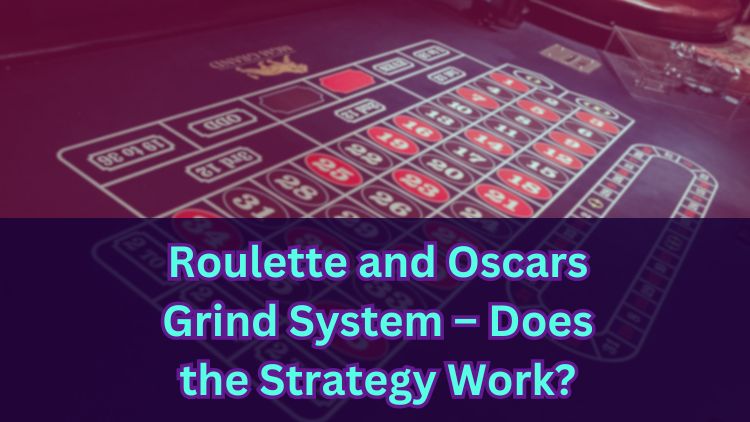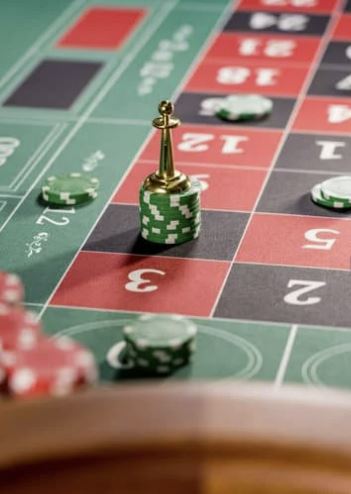
Roulette is one of the most popular casino games thanks to its straightforward rules and fast pace. Many players explore different betting systems in hopes of gaining an edge or simply managing their bankroll more effectively.
One such system is Oscar’s Grind. Known for its steady approach, this strategy has gained attention among those who favour even-money bets and a structured way to play.
But how exactly does it work, and can it really help? Keep reading to find out what Oscar’s Grind involves, how it compares with other systems, and whether it holds up at the roulette table.
What Is Oscar's Grind Roulette Strategy?
Oscar’s Grind is a method of managing stakes that some individuals choose to use when playing games like roulette. It is sometimes referred to as a positive progression system, where the size of the stake is adjusted depending on the outcome of each round.
The basic idea is to increase the stake slightly after a win, while keeping it the same after a loss. For instance, if someone starts with a £1 stake and wins, they might increase the next stake to £2. If they lose, the stake usually remains at £1. The general aim is to reach a modest profit, often around £1 per complete cycle.
This method is typically applied to even-money bets, such as red or black, or odd or even. On a European roulette wheel, these bets offer a return rate of approximately 48.6%, due to the presence of a single green zero. In contrast, American roulette wheels include two green zeros, which slightly reduce the likelihood of success on even-money bets.
If you decide to try your hand at roulette, remember to do so responsibly and within your means; never wager more than you can afford to lose.
How Does Oscar's Grind System Work in Practice?
When using Oscar’s Grind, the system starts with a small, fixed unit. Many people begin with £1, but the amount depends on your comfort and the table limits. The unit matters because it sets your basic level for each cycle.
After placing your bet, if you win, you increase the next stake by exactly one unit. For instance, a win at £1 means your next stake is £2. If you lose, your next stake stays the same. This continues until your total profit for the cycle reaches one unit, at which point you reset to the original amount and begin a new cycle.
Players often pair the system with even money bets, as covered earlier. The probability on these bets is just under 50% on European wheels, which is why many prefer them for structured staking.
Key Steps of the Oscar's Grind Betting Progression
To use Oscar’s Grind, you start by picking a small stake that fits your budget and the table limits. Even money bets such as red or black are a common choice, although the exact bet type is up to you.
If your first bet wins, your next stake increases by one unit. If you lose, you keep the same stake for the next spin. You repeat this pattern until you are ahead by one unit for that sequence, then return to your original stake.
For example, starting at £1: lose (£-1), stake stays £1; lose again (£-2), stake stays £1; then win (£-1), next stake becomes £2; win again at £2 brings total to £+1 for the cycle, so you reset to £1. This steady rhythm is the core of the system.
Is Oscar's Grind a Safe Strategy for Roulette Players?
Oscar’s Grind does not change the underlying game. Roulette outcomes are independent from spin to spin, and previous results do not affect what happens next. The system only shapes how much you stake as results  come in.
come in.
Some players prefer Oscar’s Grind because the increases are small compared to systems that double stakes after losses. That can make spending easier to track. However, the house edge still applies. On European tables, it sits at about 2.7% due to the single green zero. Over time, this edge can erode a bankroll, and long sequences that do not go your way are always possible.
If you choose to use any staking system, it could be a good idea to set personal limits, only risk what you can afford to lose, and take breaks. UK Gambling Commission (UKGC)-licensed operators provide tools such as deposit limits and time reminders, which can help you manage your play.
Oscar's Grind vs Other Roulette Betting Systems
Oscar’s Grind is a positive progression system, meaning stakes rise after wins and do not rise after losses. This gives it a gentler profile than some alternatives.
The Martingale increases pressure quickly by doubling the stake after each loss, then resetting after a win. While it aims to recover previous losses in one hit, long losing runs can push stakes to table limits or beyond a player’s budget fast.
The Fibonacci system raises stakes according to the famous sequence, usually after losses and stepping back after wins. It moves more slowly than Martingale but still escalates in a way that can become demanding during extended downswings.
Oscar’s Grind sits at the slower end of the scale. It aims to grind out a small profit per cycle with modest increases. None of these methods alters the chance of any outcome, but they do feel different to use, especially when the table has tight limits or a small minimum stake.
Advantages and Drawbacks of Oscar's Grind
Oscar’s Grind is a less aggressive staking approach compared to systems that increase bets sharply after losses. For individuals who prefer gradual and more predictable changes in stake size, this method may contribute to a more measured experience. The smaller increases can make it easier to monitor spending and may reduce the likelihood of reaching table limits quickly, which is worth considering when those limits are relatively low.
However, the system tends to build profit at a slower pace. If wins and losses occur in roughly equal measure, it can take a significant amount of time to complete a cycle and reach the intended profit target. Longer losing streaks may also result in many rounds being played before returning to the starting point, even though the changes in stake size remain modest.
Wheel layout is also an important factor. European roulette has a single green zero, which offers a lower house edge compared to American roulette, which has two green zero sections. While opting for a European wheel reduces the house’s advantage slightly, it does not eliminate it altogether.
Does Oscar's Grind System Actually Work?
Oscar’s Grind is sometimes used by players to help structure their staking approach, with the aim of keeping bet increases gradual. Some find this helpful for managing the pace of their session. However, it’s important to understand that this system does not influence the outcome of the game. Each spin in roulette is random and independent, and the house edge remains unchanged. No staking method can alter the long-term probabilities.
For those who choose to explore systems like Oscar’s Grind, it’s essential to stay within your personal budget and stick to even-money bets if you’re following the typical structure. The system involves resetting after a small profit is reached per cycle, but this should not be viewed as a way to overcome the odds.
UKGC-licensed gambling websites clearly display game rules and provide access to safer gambling tools. It’s advisable to review table limits and game types beforehand. Used with awareness, Oscar’s Grind may be seen as a way to organise bets, but not as a method for securing long-term returns.
**The information provided in this blog is intended for educational purposes and should not be construed as betting advice or a guarantee of success. Always gamble responsibly.
*All values (Bet Levels, Maximum Wins etc.) mentioned in relation to these games are subject to change at any time. Game features mentioned may not be available in some jurisdictions.
